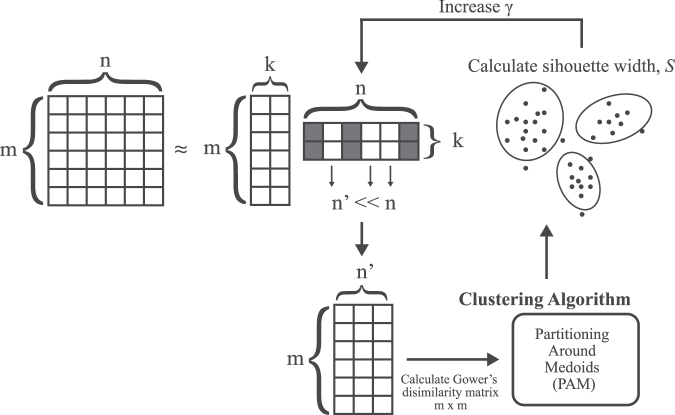FIG. 1.
Diagram of the hybrid generalized low-rank model and clustering approach implemented for unsupervised learning. The full feature set with n features and m observations (i.e., traumatic brain injury [TBI] patients) is decomposed into two matrices of lower rank (i.e., dimensions), k. An L1-regularization parameter, γ, is applied to the second low-rank matrix to create a feature subset n’, of the original matrix. The n’ x m feature subset is used to calculate an m x m dissimilarity matrix of the observations and clustered using the partitioning around medoids (PAM) algorithm. The average silhouette width of the clusters is calculated for a range of 3–10 clusters in PAM. The γ parameter is increased if the average silhouette width is higher than the previous iteration and stopped when n’ is zero. The final feature subset n’ and clustering schema is selected using the γ value that yields the highest cluster silhouette width.

